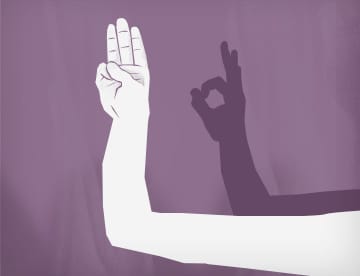- April 12, 2012
Attack of the Horrible Presentation
When I was an undergrad student, I studied film. One valuable lesson I picked up in school was how to prepare for a presentation. My instructors taught us to run a projector correctly; or, they let us know
 in no uncertain terms, you were wasting everyone’s time. Here’s what was expected of you: arrive early, clean your film, clean the projector, check the bulb, set the focus, set the sound levels, and cue up your reel. Do anything wrong and you would be on the receiving end of glower, ridicule, and not a word of critique about the film you were presenting.
in no uncertain terms, you were wasting everyone’s time. Here’s what was expected of you: arrive early, clean your film, clean the projector, check the bulb, set the focus, set the sound levels, and cue up your reel. Do anything wrong and you would be on the receiving end of glower, ridicule, and not a word of critique about the film you were presenting.
Well, that was a disaster
There is a huge amount of value from that lesson that I apply to presenting design to clients. I’ve seen designers spend weeks agonizing over the perfect typefaces and colors, scouring huge libraries of photos to find the perfect combination of subject, composition, and tone. Then, when they got to the point of presenting the work, a missed typo in a headline derailed the client feedback. Another cringe-worthy memory I witnessed: an amazing page layout created for higher resolutions, losing its magic when projected at 800×600. I watched the presenter scrolling left and right struggling to allow the client to see all the different parts of the page. I think all of us have, at one time or another, found ourselves saying, “this won’t look so blown out on your computer monitor.” “The colors have shifted on this projector.” You know the feeling… [shudder].
How can you make sure your work is seen as intended? The best thing you can do to avoid those awkward situations is to plan in advance. How do I prepare for a presentation? I go back to that advice I learned in film school. Clean up your work, show up early, and check out your equipment.
Preparing with the team
When we are getting ready for a client presentation, we always have internal reviews that everyone on the project team is invited to be involved in. We go over everyone’s work and give constructive feedback. The project manager takes on the important task of giving every page an editorial review; checking for typos, poor grammar, and even alternative spellings specific to a brand that spellcheck won’t catch: “gray” instead of “grey” or “theatres” rather than “theaters.”
Talking to the client
Also, we reach out to the client to find out what kind of room we are presenting in and ask a lot of questions: “Will we have internet access? What kind of projector do you have? What’s the resolution?” Or, even better: “Is there a screen to use if we bring our own projector?” Having as much control over presenting your work in the best possible light is a huge asset.
Sometimes we find out early in the project that a conference room has really bad lighting conditions or poor views for people sitting too far from the screen. In those cases, we ask the client to bring as many laptops to the meeting as possible, so everyone can look at the work on their own personal screen.
What else can go wrong?
You’ve carefully prepared and cleaned up your work. You arrive early to the meeting and… a hurricane has knocked out the internet for the entire state, and the client’s AV person has finally decided to follow their dreams to join a mime troupe in Montreal. Something will inevitably happen out of your control. No matter how bad the situation may seem, if you packed your own wi-fi; or, worst case scenario, brought full color prints of your page layouts, you can still present your work. Preparation is key, but I’ve found the best asset is to stay calm and adapt to change the situation to your favor. If you’ve cleaned up your work, done your preparation, and got there early enough, there’s still an opportunity to show that you’re not wasting anyone’s time. Tell us about your client presentation tips or even better, your presentation horror stories.